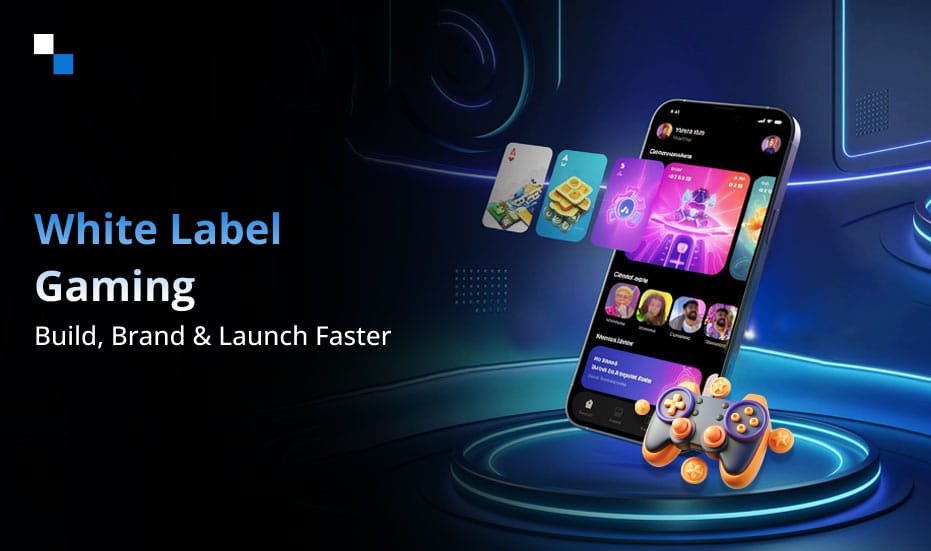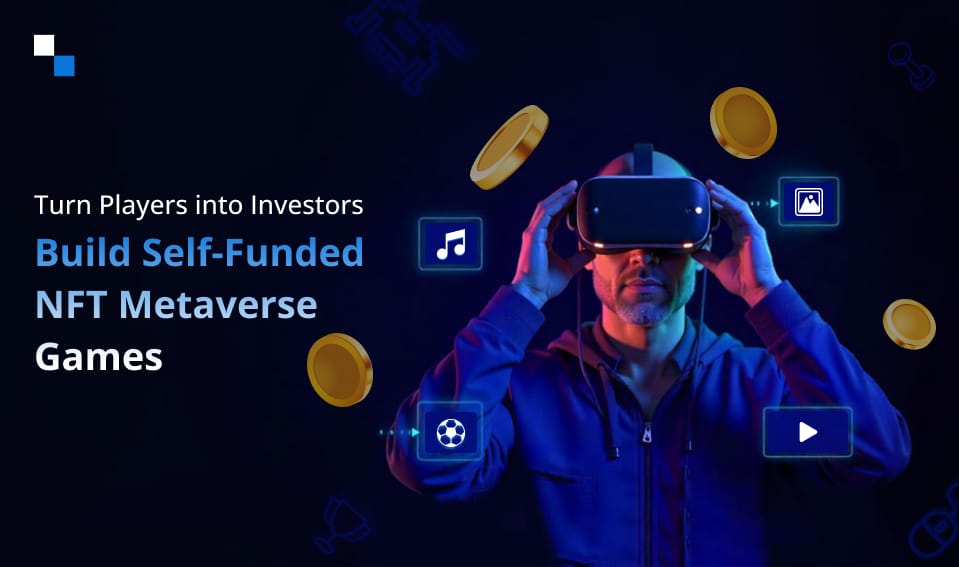
Mastering DEX Analytics: A Complete Guide to DEX Screener Development in 2025
December 9, 2024
How to Build a Multichain Meme Coin Launchpad Inspired by PumpFun Clone with EVM Compatibility?
December 11, 2024Table of Contents
Introduction
The gaming industry has undergone a technological metamorphosis, with AAA games emerging as its most prominent and visually stunning exemplars. Characterized by substantial budgets, cutting-edge development pipelines, and a relentless pursuit of innovation, AAA titles have redefined the boundaries of interactive entertainment. AAA game development is more than just entertainment; they are showcases of technological prowess, pushing the limits of hardware capabilities and software ingenuity.
What are AAA Games?
AAA games represent the zenith of the gaming industry, distinguished by their substantial production budgets, expansive development teams, and commitment to technological innovation. These titles are meticulously crafted to deliver visually striking, performance-optimized experiences, often incorporating the latest advancements in game engines and hardware.
26% of AAA game developers have games being adapted into movies or shows
Developed by established studios with significant financial backing, AAA game development is characterized by:
- Advanced Graphics: Leveraging the latest rendering techniques and hardware, AAA games deliver stunning visual fidelity.
- Complex Gameplay: These games often feature intricate mechanics, requiring sophisticated programming and artificial intelligence.
- Massive Scale: AAA titles frequently boast expansive open worlds or detailed indoor environments, demanding advanced-level design and world-building.
- Online Infrastructure: Many AAA game developers rely on robust online infrastructure to support multiplayer gameplay, requiring sophisticated networking and server technology.
Key Differences: AAA vs AA, Indie & Hyper-Casual Games
The video game industry is fueled by diversity, ranging from blockbusters AAA game development to innovative indie masterpieces. Every category has its own unique features in terms of scale, ambition, and audience. Here’s a rundown of how AAA, AA, indie, and hyper-casual games are different.
AAA Games – The Pinnacle of High-End Gaming
A AAA game company develops these titles with unparalleled production values, setting the boundaries for technology and story. These are games designed to provide cinematic experiences, usually underpinned by years of support and best brains.
- Created by premier studios with limitless resources
- Focuses on photorealism and immersive stories
- Spans high-end platforms such as next-gen consoles and gaming laptops
- Demands heavy marketing and worldwide distribution
- Examples: Elden Ring, Call of Duty, Grand Theft Auto VI
AA Games – Balanced Ambition and Creativity
Between AAA game development and independent projects, AA games provide refined experiences without the crushing scope. These games usually belong to studios with specialized skill sets, providing distinctive gameplay without the burden of competing with budget-busting releases.
- Developed by mid-sized studios with concentrated creative direction
- Finds a balance between quality and development scope that is feasible
- Tends to experiment with niche genres or new mechanics
- Uses existing engines such as Unreal or Unity for cost-effectiveness
- Examples: Hellblade: Senua’s Sacrifice, Kena: Bridge of Spirits
Indie Games – Where Innovation Thrives
Independent developers fuel innovation in gaming, creating experiences unencumbered by corporate interests. Without the support of a AAA game company, these titles depend on passion, creativity, and fan support to thrive.
- Developed by small groups or individual developers with low budgets
- Focuses on artistic vision and out-of-the-box thinking
- Shorter development cycles but extremely iterative
- Catches on via digital channels and word-of-mouth
- Examples: Hollow Knight, Stardew Valley, Celeste
Hyper-Casual Games – Instant Play, Mass Appeal
Optimized for fast play, hyper-casual games swamp mobile stores with simplicity. Such games emphasize ease of use, thus being well-suited to casual players and viral phenomena.
- Has minimalist mechanics for instant pick-up-and-play appeal
- Evolved quickly with light engines and nimble methodologies
- Monetized mainly through ads and microtransactions
- Lives on social media trends and app store algorithms
- Examples: Flappy Bird, Subway Surfers, Stack Jump
Whereas AAA game development provides unmatched quality of production, AA and indies permit creative risk-taking on a larger scale. Hyper-casual titles, however, appeal to increasingly large mobile gamers. Being familiar with these divergences guides developers and publishers in matching purposes with the corresponding market.
Why are AAA Games Popular?
Beyond their technical prowess, every AAA game development company have captivated audiences worldwide due to their ability to deliver:
- Cinematic Experiences: Blending interactive gameplay with cinematic storytelling, AAA titles offer immersive narratives.
- Social Connection: Multiplayer modes and online communities foster social interaction and competition.
- Technological Showcase: AAA games often serve as platforms for demonstrating the capabilities of new hardware and software.
- Cultural Impact: Some AAA titles have become cultural phenomena, influencing fashion, music, and even language.
The AAA game development landscape is a dynamic ecosystem where innovation is paramount. As technology continues to advance, we can expect even more groundbreaking experiences from these titles.

How AAA Games Work?
- Concept and Pre-Production: Game idea, market research, design document.
- Asset Creation: Character, environment, and graphic design.
- Game Development: Programming, level design, engine integration.
- Quality Assurance: Testing, balancing, optimization.
- Release and Post-Launch: Marketing, launch, updates.
- Large Teams and Budgets: Requires significant resources and personnel.
Learn How Do Aesthetics and Functionality Shape AAA Game Character Design in this blog.
List of Popular AAA Games
AAA games represent the pinnacle of interactive entertainment, boasting cutting-edge graphics, immersive storylines, and expansive gameplay. Every AAA game development company has captured the hearts of millions, setting the benchmark for the industry.
While the gaming landscape is constantly evolving, certain titles have solidified their place in the AAA pantheon. Here are some iconic examples:
- Action-Adventure: The Witcher 3: Wild Hunt, Red Dead Redemption 2, Uncharted series
- Role-Playing Games (RPGs): The Elder Scrolls V: Skyrim, The Witcher series, The Legend of Zelda series
- First-Person Shooters (FPS): Call of Duty franchise, Halo series, Battlefield series
- Open World: Grand Theft Auto V, Red Dead Redemption 2, The Legend of Zelda: Breath of the Wild
- Sports: FIFA, Madden NFL, NBA 2K
- Racing: Gran Turismo, Forza Horizon, Need for Speed
Benefits of Developing a AAA Game in 2025
Developing a AAA game in 2025 offers various advantages for the gaming industry, significantly impacting developers and players alike. Here are some of them:
1. Technological Advancements
The rapid pace of innovation in gaming technology, including graphics engines, artificial intelligence, and virtual reality, allows AAA game developers to create games that are more immersive and interactive than ever before. For AAA games in 2025, these technologies will push the boundaries of realism and interactivity, thus opening new standards for the industry.
2. Expanding Market Opportunities
The gaming industry has been experiencing an unprecedented level of growth in terms of players. More and more people of all demographics are joining this platform. The AAA game development company can leverage this trend as AAA titles have the potential to grab more market share because they attract both casual and hardcore gamers. Adding cross-platform play features and live-service models would increase accessibility and engagement for a wider reach.
3. Increased Community Involvement
AAA games often create lively communities through online multiplayer modes and constant update content. In 2025, AAA game developers can cash in on this trend by using rich community engagement strategies with real-time feedback and adaptability depending on player choices. Such a strategy would not only enhance player satisfaction but would also create loyalty in the long run.
4. Financial Feasibility
Despite the price associated with AAA game development, successful titles do generate solid returns on investment. The prospect of generating record-breaking sales figures, as seen in many previous blockbusters, is a great financial motivator for AAA game developers. In 2025, the sustained popularity of AAA games will likely attract significant investment from publishers and stakeholders.
5. Prestige and Recognition
Developing a hit AAA game can further enhance a studio’s credibility in the business. The publicity of establishing such a title often opens avenues for new business relationships and garners more attention. In competition, especially during 2025, differentiating itself with a well-crafted AAA game may establish the AAA game development company as one of the top players in the field.
6. Potential for Long-Term Development
AAA titles usually receive extended post-launch support in the form of downloadable content, expansions, and live events. While this model keeps players interested for longer periods, it also supplies the developers with continuous flows of revenue even after the actual release. By 2025, this will matter most because gamers more than ever would want frequent updates and new content.
7. Cultural Impact
AAA games can be influential on popular culture. The AAA game developer, by crafting narratives that resonate deeply with players, can shape trends in entertainment outside of the gaming industry. This power will be tapped into in 2025 for studios to create experiences that impact players and society as a whole.
Learn How to Craft Iconic Heroes & AAA Game Character Design in this Blog.
Monetization Models in AAA Gaming
In 2025, monetization methods in AAA game development are changing fast—through shifting player behaviors, technological advances, and the increasing overlap between established gaming and new styles such as Web3. For publishers and studios, creating a viable revenue framework is as important as crafting engaging gameplay.
1. Premium Game Sales
The most traditional one is premium sales, where one-time payment is made via platforms such as Steam, PlayStation Store, Xbox Marketplace, and Epic Games Store. This best suits story-based or campaign-laden AAA titles that provide a whole package at o
2. Downloadable Content (DLCs) & Expansion Packs
Post-launch materials like DLCs, map packs, new missions, and character skins are a profitable model for prolonging gameplay and creating additional revenue streams. In AAA game development, this method not only extends the life of the game but also enhances user involvement.
Most AAA game studios employ seasonal models that open up players to special content, events, and progression-based rewards. It keeps the player pool engaged and interested while creating recurring revenue streams.
3. In-Game Purchases & Microtransactions
Microtransactions permit players to purchase in-game assets like skins, weapons, currency, or equipment. When done considerately—without being pay-to-win—they become a principal revenue column for live-service AAA games.
4. Subscription Models
With services like Xbox Game Pass, PlayStation Plus, and EA Play picking up momentum, subscription-based gaming of AAA titles is going mainstream. For game developers, including games into such systems guarantees regular royalties and extensive visibility.
5. Blockchain-Enabled Assets & NFTs
A modern twist in AAA game development, blockchain integration allows players to own, trade, or sell in-game assets through NFTs. This model introduces true digital ownership and decentralized economies, offering new monetization avenues for forward-thinking studios.
6. Cross-Platform Monetization
To maximize reach, many AAA game companies are enabling seamless experiences across console, PC, and cloud platforms. Monetization is optimized through synchronized purchases, shared inventories, and universal progression systems.
Cost to Create a AAA Game
The staggering cost of AAA game development is a testament to the scale and complexity of these projects. Factors contributing to this exorbitant price tag include:
- Massive Development Teams: Assembling and retaining a large team of skilled professionals is costly.
- Cutting-Edge Technology: Incorporating the latest graphics, physics, and AI technology demands significant R&D expenditure.
- Marketing and Distribution: Building hype and reaching a global audience necessitates substantial marketing budgets.
- Risk Mitigation: The high-stakes nature of AAA game development services often leads to overspending to ensure project success.
Learn How to Control Costs in AA & AAA Game Development in this Blog.
The Verdict
The future of AAA gaming is a landscape with a plethora of opportunities. As technology continues to evolve, we can anticipate even more immersive, visually stunning, and interactive experiences. The convergence of gaming with virtual and augmented reality is poised to redefine the industry. While the challenges are immense, the rewards for successful AAA game development are equally substantial.
Antier is a leading AAA game company with expertise in game development and a dexterous team of certified AAA game developers, and it is your ideal partner for navigating this complex and exciting terrain. Let’s collaborate to create the next AAA gaming sensation.



